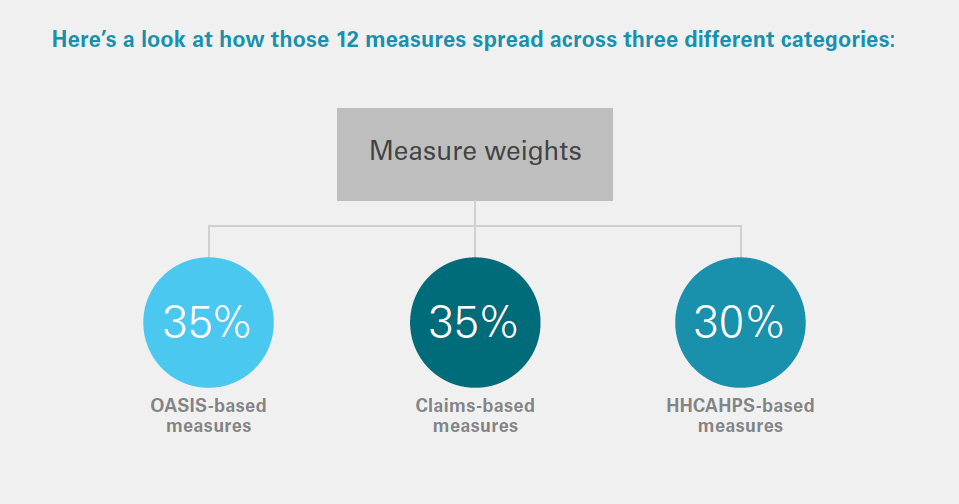CitusHealth
Aug 3 2023
Reading Time: 3 minutes
This means that HHCAHPS surveys, and how you address the issues and pain points outlined in survey results, are a major factor in how you get paid for the care you provide.
In this new era of care, it’s important for providers to adopt digital tools that prioritize meeting expectations through the evolution of CMS guidelines. Higher scores lead to higher reimbursements — and it all starts with creating better experiences for patients and caregivers.
Understanding the 12 measures of HHVBP
For Home Health Value-Based Purchasing (HHVBP), there are 12 measures pulled from three different data sources: OASIS, claims, and HHCAHPS — and they’re all adjusted for value-based purchasing based on different patient characteristics. A sufficient amount of data is needed (at least five of the 12) to calculate the total performance score.

While the HHCAHPS percentage may seem low, keep in mind that it’s more impactful given that it’s hospitalizations and emergent care. It’s common for agencies to approach HHCAHPS simply as a CMS requirement — just another piece of compliance to submit data. But that data will play a big part (30%) in how much your payment is adjusted. Let’s look at one example.
One way HHCAHPS plays a key role in reimbursement
Communication is key for coordinating care, but has been cited as one of the main challenges for home health care providers. Methods for sharing information are often lacking, with some providers even using handwritten notes to communicate.
Poor communication between nurses and physicians can be associated with an increased risk of hospital readmission among some patients. The good news is that improved, real-time connections between home-based care providers, patients, and family caregivers can produce observable improvements in care coordination.
When a communication protocol was implemented by home health professionals, it produced a response rate from primary care personnel of 82% and resulted in significant improvements in patient metrics of depression and disability, and patients claimed to be satisfied with care.
Patients equate consistent communication and collaboration between the healthcare professionals caring for them as high-quality service. In a recent survey of patients, 97% said care team responsiveness influenced their satisfaction with their home health provider, and 96% said they would choose a provider that uses real-time communication technology and would give them a better HHCAHPS score.
CitusHealth offers technology built for providers to get secure, real-time communication on any device — driving patient and caregiver satisfaction. Talk to an expert to learn how your agency can improve your performance scores.